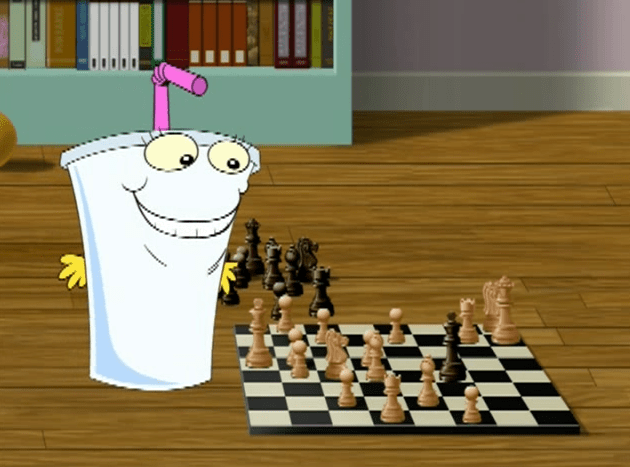
Dealing With Knights
For a very long time, Knights were my weakness. Lately, it's early-game Queen moves, but that's usually only in 3 minute games. But Knights are still a thorn in my side, though there are some easy ways to deal with them.
By far, the safest place for Black's King to go is c7. It will take the Knight a minimum of three moves before he can threaten c7. Of course, in our example there, the game is a stalemate--and, even if it wasn't, Black's King has to move after the Knight's next move, but that's not the point.
Imagine that the Knight is enclosed in a 5x5 square. Please excuse the terrible graphics. Anyway, the black X's mark places the Knight can go--ignoring the fact that there are pieces in the way. They are squares that the Knight controls, at least.

Meanwhile, the green squares mark the safest places on the board for the Black King. Assuming for a moment that the Black King can't move, in order to threaten c7, the Knight first move to f7, then g5, and then e6. Basically, in order to threaten the corner square of the 5x5 grid, the Knight has to move one square laterally or vertically, which entails three moves.
This is true no matter where on the board we go. Against Knights, the corners of that 5x5 square are the safest places to be. This is why checkmate with two Knights is impossible--it takes the Knight three moves to move one square laterally or vertically, and that positioning is mandatory during endgames. Between the two Knights needing to take six moves to effectively move two squares over, that gives the enemy King plenty of time to escape and get to a square that can't be attacked.

Also, it's of interest that the people who write Aqua Teen Hunger Force (which is going off the air thanks to a series of incredibly stupid decisions where they repeatedly changed the name of the show, thereby stopping everyone's DVRs from recording it and driving its ratings into the dirt, especially for people who have Dish Network, since the Program Guide only shows one of the two fifteen-minute shows that are on during a given time slot, making the other literally impossible to recreate a timer for) actually know how to play chess. Here, the board is set up correctly--though the white King moved to d1 for some reason during the game, there are 8 pawns, the Bishops are on different colors, and there are two Knights. Ezekiel also makes the move Bd5-e4+ (that's also incorrect--that's Be4-d5+ so the writers think algebraic numbering uses Black's side as its starting point, or the game has some really, really bizarre moves in it) which is a legal move (although it's also checkmate). He's evidently slaying the Chess Dragon, but I'm a little confused why the Chess Dragon is still playing--I would have resigned that position long, long before my King was on... "e3" according to the Chesss Dragon...
Wait, that's not e3. That's e6. I can chalk that up to not understanding algebraic notation very well, because the proper setup of the board, correct placement of pieces, and legal moves indicate that the writers know how to play. And the Black King was on e6, which would be "e3" if the numbers were flipped for Black--which would also make algebraic notation a total pain in the ass.
Unrelated, but what is the fucking deal with chess literature using figurine notation? Please, stop that, chess writers.
I actually prefer Long Algebraic, which is what they're using in Aqua Teen Hunger Force. Short Algebraic has to flirt with Long whenever multiple pieces can move to the same square--such as Nbd2, R7b6--so it felt to me that it would be better to just get used to Long Algebraic and not have to occasionally take the extra step to differentiate pieces, because I'm always differentiating pieces.
Anyway, if Knights are a pain in your ass like they are in mine, I hope you find this helpful. Peace.
